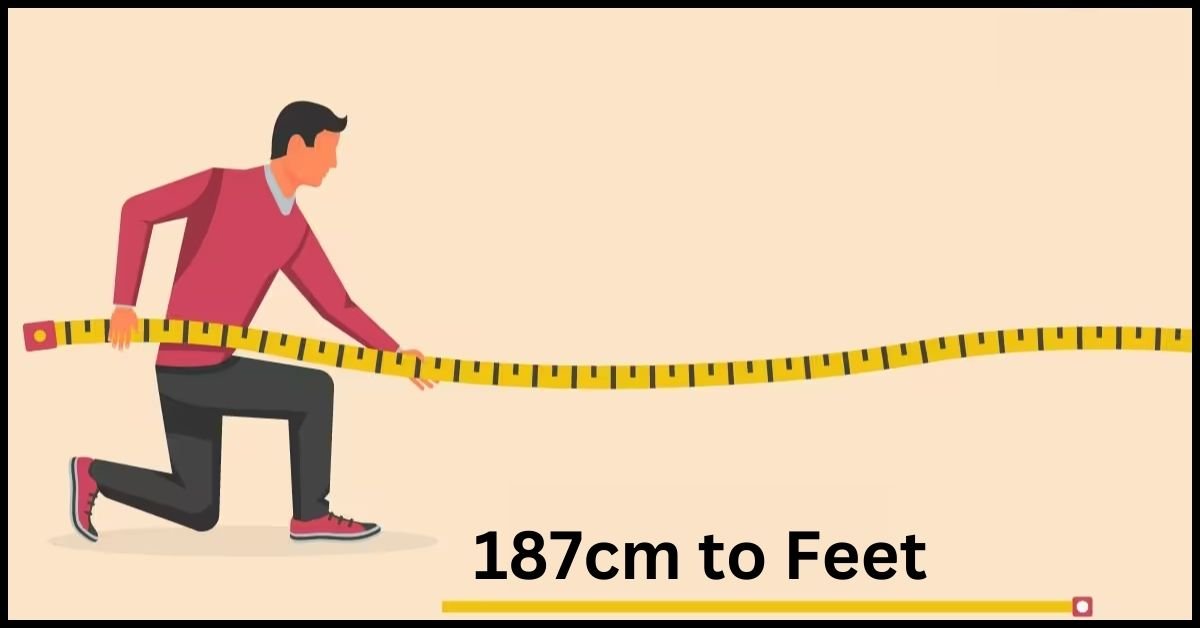Have you ever been caught in a situation where you need to convert centimeters to feet? You’re not alone. Many people need help with the metric and imperial systems, especially when traveling or shopping online. Understanding how to convert measurements can save you time and prevent confusion.
In this guide, we will focus on converting 187cm to feet. Whether planning a home improvement project or simply curious about your height in different units, mastering these conversions is essential. Let’s dive into the ins and outs of both measurement systems so that you’ll feel confident making conversions in everyday life!
Why Knowing How to Convert Measurements is Important
Knowing how to convert measurements is essential in our daily lives. It helps bridge the gap between different systems, whether you’re an avid traveler or simply navigating home projects.
Imagine buying a new piece of furniture online but only seeing dimensions in centimeters. Without conversion skills, you might end up with something that doesn’t fit your space.
Understanding these conversions also plays a role in health and fitness. For instance, if you’re tracking your height for medical purposes or monitoring growth trends, switching from metric to imperial can provide clarity during discussions with healthcare professionals.
This knowledge also enhances communication with people from various backgrounds who may use different measurement systems. It’s all about making life easier and more efficient!
Understanding the Metric System: Meters and Centimeters
The metric system is a decimal-based measurement system widely used worldwide. It offers simplicity and uniformity, making conversions straightforward.
At its core are meters and centimeters. A meter serves as the base unit for measuring length. It’s approximately equal to 39.37 inches, which is helpful compared to imperial measurements.
Centimeters are smaller units within this system. One meter contains 100 centimeters, allowing for more precise measurements in everyday life. This division makes it easy to visualize sizes often encountered—like height or furniture dimensions.
Using these metrics helps streamline communication across different fields, from science to construction, where accuracy is crucial. Understanding meters and centimeters opens doors to better-grasping distances and sizes without confusion or complex calculations.
Understanding the Imperial System: Feet and Inches
The Imperial system, often called the English system, is deeply rooted in history. It’s primarily used in the United States and a few other countries.
Feet and inches are critical units of measurement within this framework. One foot equals 12 inches, making it easy to visualize height or length. For instance, someone who stands 5 feet tall is 60 inches high.
When measuring more considerable distances, yards come into play—3 feet make up a yard. This can sometimes confuse those accustomed to metric measurements, where everything flows more straightforwardly from meters.
They understand how these measurements work and help with everyday tasks like shopping for furniture or planning home renovations. Whether comparing sizes on clothing labels or discussing your height with friends, familiarity with feet and inches makes communication smoother.
Converting 187cm to Feet: Step-by-Step Guide
Converting 187 centimeters to feet is straightforward. Start by knowing the essential conversion factor: 1 inch equals 2.54 centimeters.
First, convert centimeters to inches. Divide 187 by 2.54, which gives you approximately 73.62 inches.
Next, break down the inches into feet and the remaining inches. There are 12 inches in a foot, so divide your total inches by 12. You’ll find that it equals about 6 feet with some extra inches left over.
To find out how many additional inches remain, multiply the whole number of feet (6) back by 12 and subtract from your total inch count:
73.62 – (6 x 12) = approx. 1.62.
So, when you convert for everyday use, remember that **187 cm comes out to roughly** **6 feet and about** **1.62 inches**!
Standard Measurement Conversions for Everyday Use
When you navigate daily life, measurements pop up everywhere. Cooking, for instance, often requires conversions between metric and imperial units. A recipe might ask for grams or milliliters, but knowing these conversions can make a big difference if you’re more comfortable with cups or ounces.
Traveling also highlights the need for conversion skills. Distances can vary significantly across regions that use different systems. A kilometer may seem distant until you realize it’s just over half a mile.
Fitness enthusiasts frequently deal with weight conversions as well. Whether tracking your progress in pounds or kilograms, understanding both helps keep your goals on track.
Even simple tasks like purchasing fabric involve measurement changes. Yards to meters and vice versa are common scenarios in crafts and home projects.
By familiarizing yourself with these everyday conversions, you’ll streamline various aspects of your life without breaking a sweat!
Utilizing Conversion Tools and Apps
In today’s digital age, conversion tools and apps are your best friends regarding measurements. Whether cooking a new recipe or planning a home project, these resources can save time and reduce errors.
Many of these tools are user-friendly. Just input the value you want to convert, and voilà! Instant results appear on your screen. You don’t need to memorize formulas.
Smartphone apps add another layer of convenience. With just a tap, you can access multiple units of measurement without searching through websites or charts. Some even have offline capabilities for times when Wi-Fi is scarce.
Many web-based calculators also allow quieffortlessly ck conversions between systems like metric and imperial effortlessly. This makes understanding different measurements more accessible than ever before!
Conclusion
Understanding how to convert measurements is a valuable skill. It can enhance your daily life, whether crafting, traveling, or simply trying to understand someone’s height.
The metric and imperial systems serve different purposes, but mastering both allows for seamless communication across cultures. Knowing the basics of meters and centimeters alongside feet and inches helps bridge that gap effortlessly.
Following a straightforward method makes it quick and easy when you need to convert 187cm to feet. Remembering common conversions can simplify tasks like planning home renovations or shopping for clothes online.
Utilizing conversion tools and apps adds a layer of convenience in today’s fast-paced world. With just a few taps on your device, you can access accurate information at your fingertips.
Measurement conversions may seem daunting at first glance, but breaking them down into manageable steps reveals their simplicity. Embracing this knowledge empowers you in various aspects of everyday life.





